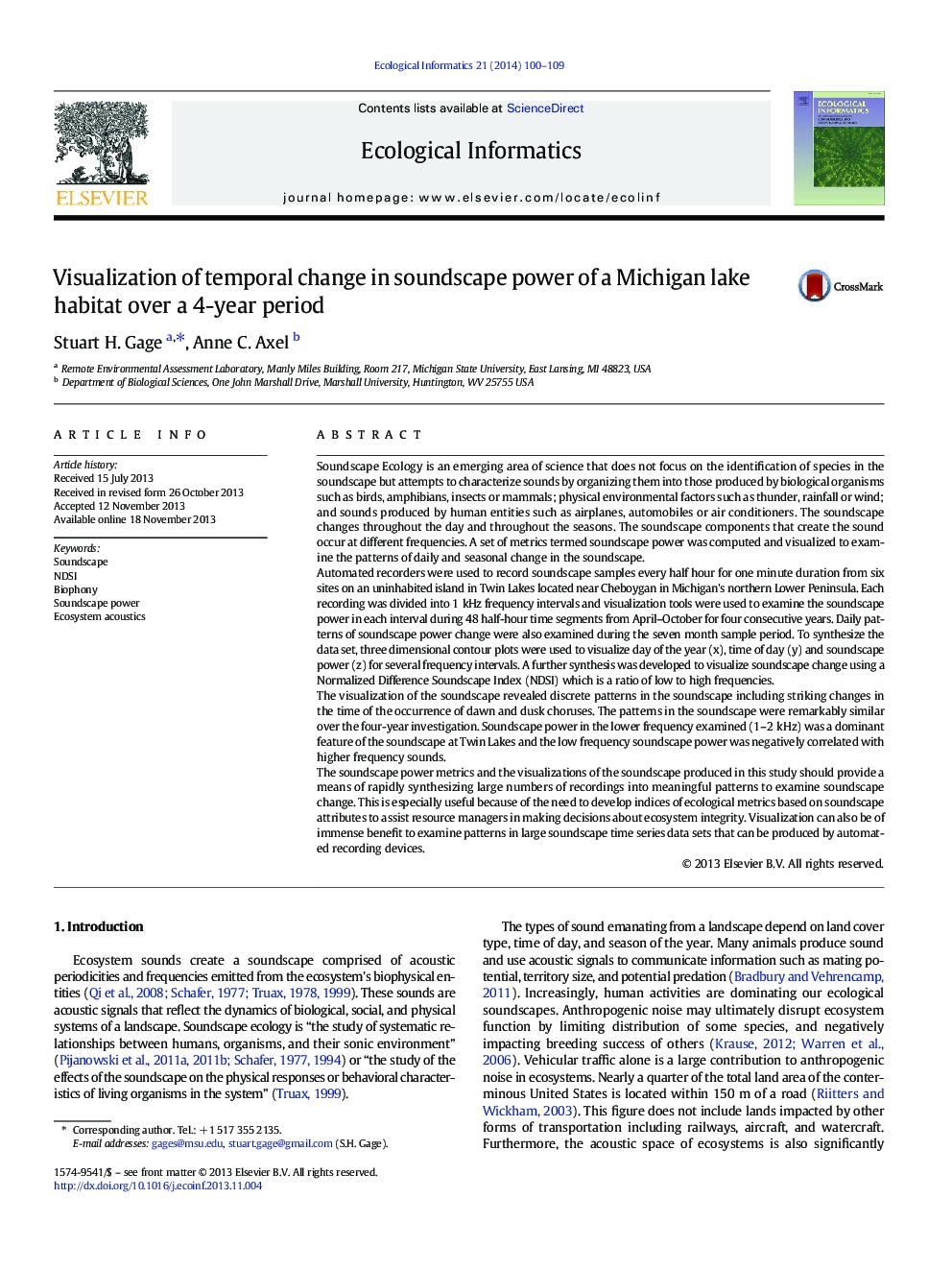| Article ID | Journal | Published Year | Pages | File Type |
|---|---|---|---|---|
| 4374900 | Ecological Informatics | 2014 | 10 Pages |
•We made recordings at half-hour intervals for 1 minute for 6 months over 4 years.•We computed soundscape power of frequency intervals to visualize soundscape patterns.•The NDSI is high over the 4 year period in this fairly undisturbed landscape.•The soundscape power visualization reveals patterns of dawn and evening choruses.•This analysis is a template to assess changes in soundscape related to global change.
Soundscape Ecology is an emerging area of science that does not focus on the identification of species in the soundscape but attempts to characterize sounds by organizing them into those produced by biological organisms such as birds, amphibians, insects or mammals; physical environmental factors such as thunder, rainfall or wind; and sounds produced by human entities such as airplanes, automobiles or air conditioners. The soundscape changes throughout the day and throughout the seasons. The soundscape components that create the sound occur at different frequencies. A set of metrics termed soundscape power was computed and visualized to examine the patterns of daily and seasonal change in the soundscape.Automated recorders were used to record soundscape samples every half hour for one minute duration from six sites on an uninhabited island in Twin Lakes located near Cheboygan in Michigan's northern Lower Peninsula. Each recording was divided into 1 kHz frequency intervals and visualization tools were used to examine the soundscape power in each interval during 48 half-hour time segments from April–October for four consecutive years. Daily patterns of soundscape power change were also examined during the seven month sample period. To synthesize the data set, three dimensional contour plots were used to visualize day of the year (x), time of day (y) and soundscape power (z) for several frequency intervals. A further synthesis was developed to visualize soundscape change using a Normalized Difference Soundscape Index (NDSI) which is a ratio of low to high frequencies.The visualization of the soundscape revealed discrete patterns in the soundscape including striking changes in the time of the occurrence of dawn and dusk choruses. The patterns in the soundscape were remarkably similar over the four-year investigation. Soundscape power in the lower frequency examined (1–2 kHz) was a dominant feature of the soundscape at Twin Lakes and the low frequency soundscape power was negatively correlated with higher frequency sounds.The soundscape power metrics and the visualizations of the soundscape produced in this study should provide a means of rapidly synthesizing large numbers of recordings into meaningful patterns to examine soundscape change. This is especially useful because of the need to develop indices of ecological metrics based on soundscape attributes to assist resource managers in making decisions about ecosystem integrity. Visualization can also be of immense benefit to examine patterns in large soundscape time series data sets that can be produced by automated recording devices.
